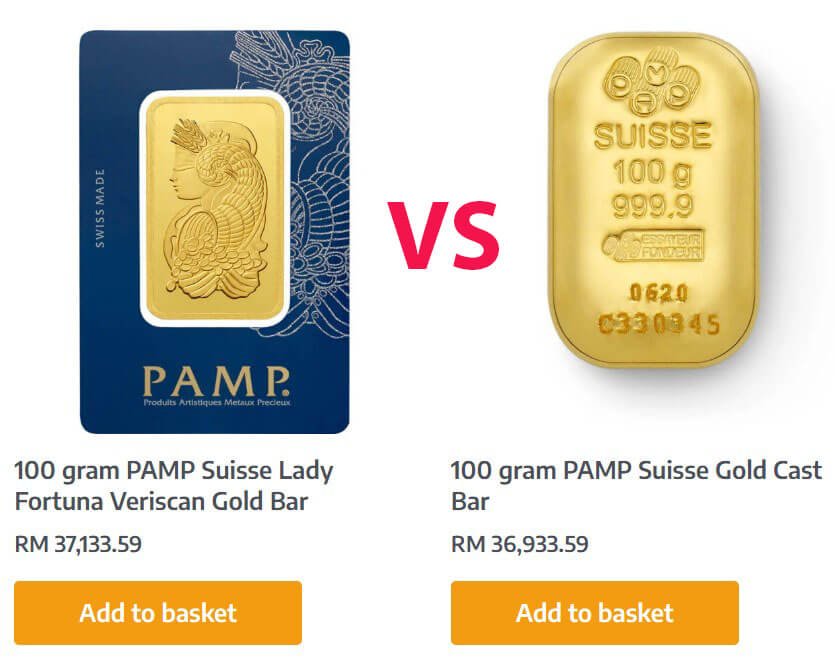
What is the difference between a Bullion Minted Bar and Bullion Cast Bar?
Here at MY Bullion Trade, we occasionally get asked what is the difference between a bullion Minted Bar and a bullion Cast Bar?
As an investor or collector, it is important to understand the difference between precious metal products. In general, bullion coins and bars are not manufactured to be perfect in appearance like proof coins. This is largely due to the small margins involved in contrast to the substantially higher premiums commanded by proof coins. Bullion coins and bars are valued by their mass (weight) and purity and have little to no numismatic value. They are not sold for their beauty and rarity like a proof coin, but rather, for their precious metal content.
Minted Bar Vs Cast Bar
Minted Bar
A Minted Bar is manufactured through a complex process that involves using hefty machinery. It starts with cutting down a long-processed strip of metal using a continuous casting machine. The metal is then melted and rolled into a precise and uniform thickness. The rolled bar is then punched with a die, acid-washed, polished and pressed in a similar fashion to a coin, which creates a more “perfect” appearance. This makes each bar consistent and almost identical in aesthetics.
Pros
- A wider range of convenient and versatile sizes.
- Minted Bars often have visually appealing artistic designs, lustrous shines and perfect finishes.
- The complex manufacturing process eliminates the chances of blemishes and marks.
- Minted Bars may come in packaging with a certificate of authenticity as well as a serial number on the bar and/or their packaging.
- Good for people investing under a self-managed super fund as it has a serial number.
Cons
- Minted Bars may at times have higher premiums due to the manufacturing process being time-consuming and expensive.
- You cannot physically hold the Minted Bar in your hands unless you remove it from the packaging, which is not recommended. Once removed from the packaging it is no longer considered as new from the mint.
- Important that the packaging and certificate are kept in good condition as this will affect the resale value of the product in the future. This is because consumers who purchase Minted Bars are purchasing them for the great finish and perfect condition of the product.
Type of consumer
Minted Bars are a happy medium between coins and cast bars. They are for people who like to have the fine 999.9 purity, stunning finish, and quality of a coin while keeping the weight and size of a cast bar.
Cast Bar
A Cast Bar is a bar that has been manufactured using a traditional process. The process is simple and only requires just a few steps. A mold is created and the heated metal is poured into it. Cast Bars aren’t designed to be perfect, and no two Cast Bars are the same. This is because the pouring process is crude and often creates abnormalities, blemishes and scratches that are unique to those bars which ultimately results in them appearing more “natural-looking”.
Pros
- You can physically touch your gold and silver without worrying about handling marks and devaluing it.
- Since a Cast Bar is an imperfect product it does not have to be in “perfect” condition when you go to resell, unlike a minted bar.
- Cast bars may at times be cheaper due to their simple casting process.
Cons
- Cast Bars are generally presented loose and hence don’t come in official mint packaging. However, they still come with the certificate of authenticity.
- There is a limited range of sizes available.
- Can come with abnormalities, blemishes and scratches.
Type of consumer
Ideal for customers who like to physically touch their gold and silver without having to worry about devaluing the product due to handling marks and damaging the packaging. Cast gold bars also have the same 999.9 purity as minted gold bars but come at a lower premium and are great for long-term saving.
